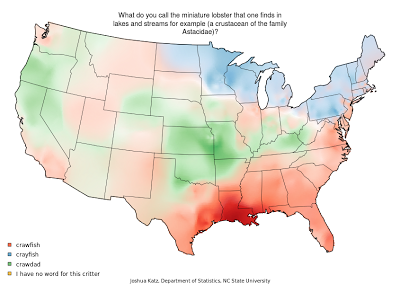The annoyance starts with the title:
“Critters So Ugly They Have to Mate With Themselves”
It’s not the critters that are ugly, it’s the title. Time used to have a little more dignity, but this sounds like it came from Buzzfeed. How demeaning to call these animals “ugly,” especially when the list contains not just the pretty marbled crayfish, but the handsome Komodo dragon (which doesn’t always reproduce asexually, putting like to the “have to” portion of the title), the sleek whiptail lizard, and the amazing looking hammerhead shark (which, again, doesn’t always reproduce asexually). “Mate with themselves” suggests self-fertilization, which some animals do, but these are all cases of parthenogenesis rather than self-fertilization
The subtitle isn’t better.
Immaculate conception may be something special among humans, but in the animal kingdom, it's always been part of the mix
Science and religion are often depicted as being at war, but they are united in the desire for good fact checking. The immaculate conception is not about the virgin birth of Jesus Christ. It’s about the conception of the Jesus’s mother, Mary, free of original sin.
I’m reminded of this anecdote from Christopher Hitchens:
I made a mistake with one guy on a radio station in Seattle. I said I don’t think anyone really believes in the virgin birth and he said ‘I do.’ I said ‘you don’t really’ and he said, ‘I do, I believe absolutely in the immaculate conception.’ I told him he’d got it wrong and he said ‘What do you mean I’ve got it wrong? I’ve been a Catholic all my life.’ The immaculate conception and the virgin birth are two different concepts. He didn’t get this, but he believed in both.
The article manages to squeeze in three alternate spellings for Marmorkrebs in an equal number of paragraphs: “marmorkrebs,” and “Marmokrebs” (sic), both in a capitalized version (preferred here on the blog, following the German practice of capitalizing all nouns) and not.
And to add insult, the article is illustrated with this:
It’s not even a picture of the right species! It’s Procambarus clarkii, the common Louisiana red swamp crayfish! There are no shortage of Marmorkrebs pictures for use on this website and elsewhere. Time, you could have emailed me.
On the plus side, article does a nice job of linking to full text of the original scientific articles. And the actual text of the article, though short, is otherwise accurate.
External links
Critters So Ugly They Have to Mate With Themselves

































